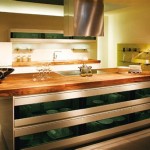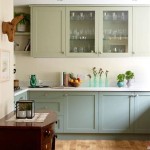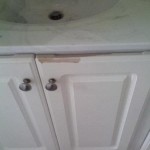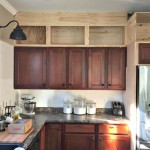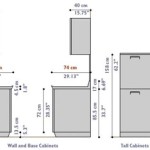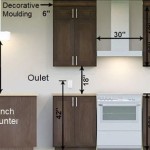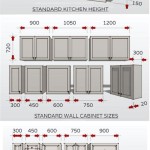```html
Kitchen Cupboard Lift Up Hinges: A Comprehensive Guide
Lift-up hinges represent a specialized category of hardware designed for kitchen cabinets and other storage units where upward opening doors are desired. Unlike traditional side-mounted hinges that allow doors to swing open horizontally, lift-up hinges facilitate the vertical raising of the cabinet door, providing unobstructed access to the contents and optimizing space utilization. This functionality is particularly advantageous in kitchens with limited space or where a seamless, modern aesthetic is sought.
These hinges operate using a variety of mechanisms, typically involving gas springs, mechanical arms, or a combination of both. The specific mechanism determines the smoothness of the lifting action, the load-bearing capacity, and the overall durability of the hinge. Selecting the appropriate lift-up hinge for a particular application requires careful consideration of several factors, including the size and weight of the door, the desired opening angle, and the intended frequency of use.
The installation of lift-up hinges can be more complex than that of standard hinges, often requiring precise measurements and specialized tools. However, the benefits of improved accessibility and enhanced design make them a popular choice for modern kitchen renovations and new constructions. This article provides a detailed overview of kitchen cupboard lift-up hinges, exploring their different types, functionalities, selection criteria, and installation considerations.
Types of Kitchen Cupboard Lift Up Hinges
The market offers a diverse range of lift-up hinges, each designed to cater to specific needs and preferences. The primary differentiation lies in the mechanism used to achieve the lifting motion and the subsequent features they offer. Understanding these different types is crucial for selecting the optimal hinge for a given kitchen cabinet application.
Gas Spring Lift-Up Hinges: These hinges utilize compressed gas within a cylinder to provide a smooth, controlled lifting action. The gas spring acts as a counterweight, reducing the effort required to open the door and preventing it from slamming shut. Gas spring hinges are known for their durability and reliability, making them a popular choice for frequently used cabinets. The force of the gas spring, measured in Newtons (N), must be carefully matched to the weight of the cabinet door to ensure proper operation. Overpowered springs can make the door difficult to close, while underpowered springs may not be able to support the door's weight.
Mechanical Arm Lift-Up Hinges: These hinges employ a system of levers and pivots to achieve the lifting motion. The mechanical advantage provided by the arm mechanism allows for the effortless raising of even heavy cabinet doors. Mechanical arm hinges often offer adjustable tension settings, allowing users to fine-tune the lifting force to match the specific weight and size of the door. They are typically more compact than gas spring hinges, making them suitable for cabinets with limited internal space. Furthermore, some mechanical arm hinges offer "stay-open" functionality, allowing the door to remain open at any desired angle without the need for additional supports.
Friction Hinges: This type of hinge relies on friction to hold the cabinet door in the desired position. They typically involve a pivot point with adjustable friction plates that can be tightened or loosened to control the holding force. While simpler in design than gas spring or mechanical arm hinges, friction hinges may not provide the same level of smoothness or controlled movement. They are generally suitable for lighter doors and less frequently used cabinets. Over time, the friction plates may wear down, requiring adjustment or replacement.
Soft-Close Lift-Up Hinges: This feature can be integrated into any of the hinge types mentioned above. Soft-close mechanisms prevent the cabinet door from slamming shut by gradually decelerating its motion in the final few inches of closing. This not only reduces noise but also protects the cabinet frame and door from damage. Soft-close functionality typically involves a small hydraulic damper that absorbs the kinetic energy of the closing door.
Tip-On (Push-to-Open) Lift-Up Hinges: These hinges eliminate the need for handles or knobs, creating a clean, minimalist aesthetic. They incorporate a spring-loaded mechanism that allows the door to be opened with a simple push. When pressed, the door releases and pops open slightly, allowing the user to grasp it and lift it further. Tip-on hinges are often used in conjunction with other lift-up hinge types to provide both handle-free operation and upward opening functionality.
Key Considerations for Selecting Lift-Up Hinges
Choosing the right lift-up hinge requires careful assessment of several factors, ensuring that the selected hardware meets the specific demands of the application. These factors include door weight and size, opening angle, cabinet construction, and intended usage frequency.
Door Weight and Size: The weight and size of the cabinet door are critical determinants of the appropriate hinge type and strength. Heavier doors require stronger hinges with greater lifting capacity. Manufacturers typically provide detailed specifications on the maximum weight and size that each hinge can support. Exceeding these limits can lead to premature failure of the hinge or unsafe operation. Accurate measurement of the door's dimensions and weight is therefore essential before making a purchase.
Opening Angle: The desired opening angle of the cabinet door should also be considered. Some lift-up hinges allow the door to open fully to 90 degrees or more, while others have a limited opening angle. The choice depends on the available space above the cabinet and the desired level of access to the contents. If the cabinet is located beneath an overhanging shelf or another cabinet, a hinge with a limited opening angle may be necessary to prevent collisions.
Cabinet Construction: The material and construction of the cabinet frame and door can also influence the choice of hinge. For example, thicker, more solid doors may require stronger hinges with larger mounting plates. The type of material used for the cabinet (e.g., solid wood, particleboard, MDF) will also affect the selection of appropriate screws and mounting hardware. It is important to ensure that the chosen hinges are compatible with the cabinet's construction and that the mounting hardware is appropriately sized to prevent loosening or damage over time.
Intended Usage Frequency: The frequency with which the cabinet door will be opened and closed is another important factor to consider. For frequently used cabinets, more durable hinges with smoother operating mechanisms are recommended. Gas spring hinges, for example, are known for their longevity and reliability in high-use applications. For less frequently used cabinets, simpler and less expensive hinge options may be sufficient.
Aesthetic Considerations: While functionality is paramount, the aesthetic appearance of the hinges should also be considered, especially in modern kitchen designs. Lift-up hinges are available in a variety of finishes and styles to complement the overall look of the cabinets. Concealed hinges, which are hidden from view when the door is closed, offer a clean, minimalist aesthetic. Visible hinges can also be chosen to match the cabinet hardware and create a cohesive design.
Installation Considerations for Lift-Up Hinges
Proper installation is crucial for ensuring the safe and reliable operation of lift-up hinges. Incorrect installation can lead to premature failure of the hinge, damage to the cabinet, or even injury. Therefore, it is essential to follow the manufacturer's instructions carefully and to use the appropriate tools and techniques.
Precise Measurements: Accurate measurements are essential for ensuring that the hinges are properly aligned and that the door opens and closes smoothly. The distance between the hinge mounting points, the door's edge, and the cabinet frame must be precisely measured and marked before drilling any holes. Templates or jigs can be helpful for ensuring accuracy and consistency.
Correct Mounting Hardware: Using the correct type and size of screws is crucial for securing the hinges to the cabinet frame and door. The screws should be long enough to penetrate deeply into the wood, but not so long that they protrude through the other side. Pilot holes should be drilled before installing the screws to prevent splitting or cracking of the wood. The size of the pilot hole should be slightly smaller than the diameter of the screw to ensure a tight fit. For heavier doors, it may be necessary to use metal inserts or reinforcing plates to provide additional support.
Adjustments and Fine-Tuning: After the hinges are installed, it is important to adjust them to ensure that the door opens and closes smoothly and that it is properly aligned. Many lift-up hinges have adjustable features that allow you to fine-tune the lifting force, the opening angle, and the door's alignment. Refer to the manufacturer's instructions for specific adjustment procedures. If the door is not aligned properly, it may rub against the cabinet frame or not close completely. If the lifting force is not properly adjusted, the door may be difficult to open or close.
Safety Precautions: When installing lift-up hinges, it is important to take appropriate safety precautions. Wear safety glasses to protect your eyes from flying debris. Use a level to ensure that the cabinet is level and stable before starting the installation. If you are not comfortable performing the installation yourself, it is best to hire a qualified professional.
Professional Installation: While DIY installation is possible, for complex systems or when dealing with expensive cabinetry, professional installation is highly recommended. Professionals possess the necessary experience, tools, and expertise to ensure proper installation and optimal performance, minimizing the risk of damage or safety hazards. They can also advise on the best hinge type for the specific application and provide ongoing maintenance and support.
```
Richelieu Hardware Atmos Series Anthracite Soft Close Medium Duty Overlay For Frameless Cabinet Lift Up Hinge 1 Pair At00md100 The Home Depot

Vertical Lift Cabinet Door Hinge Decora Cabinetry

Vertical Lift Door Cabinet Construction Glossary Doors Hinges Room Design Kitchen

Gimify Vertical Lift Hinges For Cabinet Door Swing Up Stay Pneumatic Kitchen Mechanism Doors Hanging Cabinets

Richelieu Hardware Atmos Series White And Gray Soft Close Medium Duty Overlay For Frameless Cabinet Lift Up Hinge 1 Pair At00md30 The Home Depot

Aventos Hk Lift Up Cabinet Hinge Pack Mechanisms Furniture Fittings Hinges Kitchen Essentials Drop Down Systems Scf Hardware

Kitchen Cabinet Lift Swing Up Flap Hinges Top Boxes Doors Of Hafele

Kitchen Cabinet Door Adjustable Polish Hinge Furniture Lift Up Flap Stay Support Hardware Close Cupboard Hinges For Home Supplies Temu United

Kitchen Cabinet Cupboard Door Lift Up Down Strut Lid Flap Stay Support Hinge

Cabinet Door Vertical Swing Lift Up Stay Pneumatic Arm Kitchen Mechanism Hinges Silver Hanging Furniture Design Doors
Related Posts

